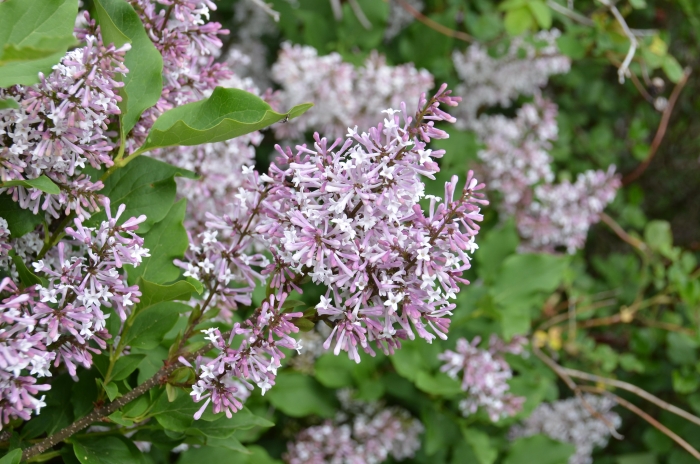Korean Lilac
(Syringa patula)
Korean Lilac (Syringa patula)
/
/

F. D. Richards
CC BY-SA 2.0
Image By:
F. D. Richards
Recorded By:
Copyright:
CC BY-SA 2.0
Copyright Notice:
Photo by: F. D. Richards | License Type: CC BY-SA 2.0 | License URL: https://creativecommons.org/licenses/by-sa/2.0/ | Uploader: F. D. Richards | Publisher: Flickr |

























Estimated Native Range
Summary
Syringa patula, commonly known as Korean Lilac, is a deciduous shrub native to the hillsides and woodland margins of Korea and Manchuria. It typically grows to a height of 4-9 feet (1.2-2.7 meters) and a width of 5-7 feet (1.5-2.1 meters). This species is characterized by its compact, rounded form and dense, twiggy branches. It boasts abundant clusters of fragrant flowers that are most commonly lilac to purple in color, with some cultivars offering pink or blue blooms, appearing in late spring. The flowers are highly showy and attract butterflies and bees.
Korean Lilac is valued for its size, which is suitable for small gardens, and its highly fragrant flowers that add a delightful scent to the landscape. It is often used in foundation plantings, as a specimen plant, or in mixed shrub borders. This shrub prefers full sun to light shade and requires well-drained soil with consistent moisture. It is relatively low maintenance, but benefits from pruning immediately after flowering to maintain its shape and promote vigorous growth. Popular cultivars include ’Miss Kim’ and ’Palibin’, which are known for their compact habit and profuse blooming. Potential problems include powdery mildew and lilac borer, but these can be managed with proper care and monitoring. Korean Lilac is not typically invasive, but it should be monitored to ensure it does not spread beyond its intended area in the garden.CC BY-SA 4.0
Korean Lilac is valued for its size, which is suitable for small gardens, and its highly fragrant flowers that add a delightful scent to the landscape. It is often used in foundation plantings, as a specimen plant, or in mixed shrub borders. This shrub prefers full sun to light shade and requires well-drained soil with consistent moisture. It is relatively low maintenance, but benefits from pruning immediately after flowering to maintain its shape and promote vigorous growth. Popular cultivars include ’Miss Kim’ and ’Palibin’, which are known for their compact habit and profuse blooming. Potential problems include powdery mildew and lilac borer, but these can be managed with proper care and monitoring. Korean Lilac is not typically invasive, but it should be monitored to ensure it does not spread beyond its intended area in the garden.CC BY-SA 4.0
Plant Description
- Plant Type: Shrub
- Height: 4-9 feet
- Width: 5-7 feet
- Growth Rate: Moderate
- Flower Color: Purple, Pink, White
- Flowering Season: Spring
- Leaf Retention: Deciduous
Growth Requirements
- Sun: Full Sun, Part Shade
- Water: Medium
- Drainage: Medium
Common Uses
Bank Stabilization, Bee Garden, Bird Garden, Border Plant, Butterfly Garden, Deer Resistant, Drought Tolerant, Fragrant, Hummingbird Garden, Low Maintenance, Rabbit Resistant, Salt Tolerant, Showy Flowers, Street Planting
Natural Habitat
Hillsides and woodland margins of Korea and Manchuria
Other Names
Common Names: Manchurian Lilac, Sammetssyren, Guan Dong Qiao Ling Hua
Scientific Names: , Syringa patula, Syringa pubescens subsp. patula, Syringa pubescens var. patula, Syringa patula var. kamibayashii, Syringa patula var. venosa, Syringa velutina var. kamibayashii, Syringa velutina, Syringa palibiniana, Syringa koehneana
GBIF Accepted Name: Syringa pubescens subsp. patula (Palib.) M.C.Chang & X.L.Chen